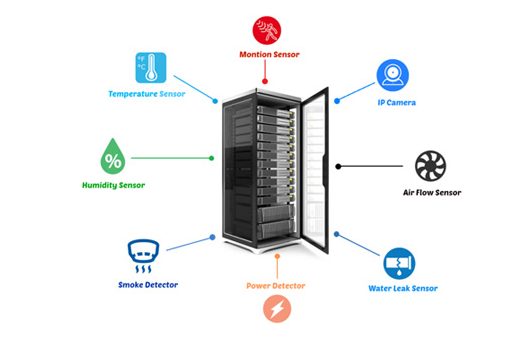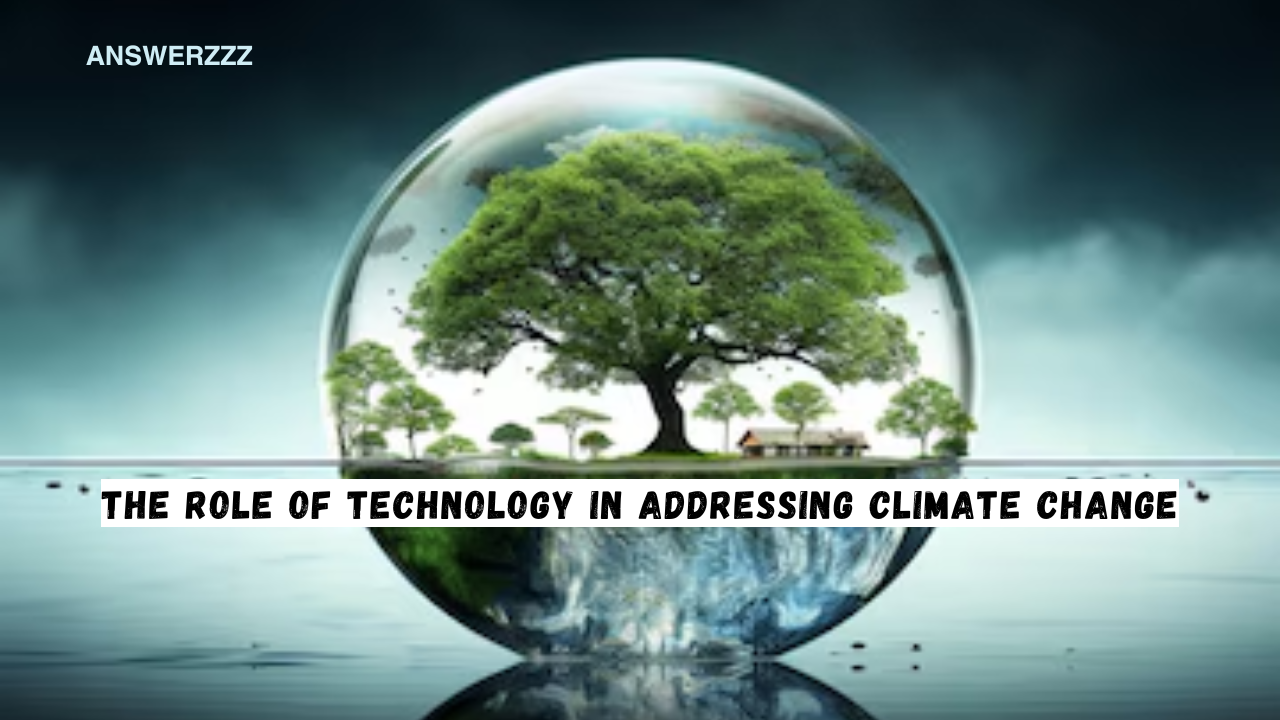Climate change is one of the most pressing challenges facing humanity today. The rise in global temperatures, extreme weather events, and the threat to biodiversity have created an urgent need for effective solutions. Technology plays a pivotal role in combating climate change, providing innovative methods to reduce greenhouse gas emissions, enhance energy efficiency, and adapt to the changing environment. This article explores the various technological advancements that contribute to climate change mitigation and adaptation.
1. Renewable Energy Technologies

1.1 Solar Power
Solar energy has emerged as one of the most promising renewable energy sources. Photovoltaic (PV) cells convert sunlight directly into electricity, and advancements in solar technology have led to increased efficiency and reduced costs. The global capacity of solar energy has skyrocketed, providing clean electricity to millions of homes and businesses. Solar farms, which harness large areas of land for energy production, contribute significantly to national grids, reducing reliance on fossil fuels.
1.2 Wind Energy
Wind turbines capture kinetic energy from the wind and convert it into electricity. The development of larger, more efficient turbines has made wind power a leading source of renewable energy worldwide. Offshore wind farms, located in bodies of water, have the potential to generate vast amounts of electricity without taking up land space, providing a sustainable solution for energy generation.
1.3 Hydropower
Hydropower, generated by harnessing the energy of flowing water, is one of the oldest forms of renewable energy. Technological advancements in turbine design and water management systems have increased the efficiency and sustainability of hydropower plants. While large dams can have significant ecological impacts, small-scale hydroelectric systems offer a more environmentally friendly alternative.
1.4 Biomass and Bioenergy
Biomass energy utilizes organic materials, such as wood, agricultural residues, and waste, to produce electricity and heat. Technological innovations in bioenergy production have made it possible to convert waste into valuable energy, reducing landfill usage and greenhouse gas emissions. Advanced biogas systems capture methane from organic waste, which can be used as a renewable energy source.
1.5 Geothermal Energy
Geothermal energy harnesses heat from the Earth’s core for electricity generation and direct heating applications. Enhanced geothermal systems (EGS) involve drilling deep into the Earth to access hot rock and circulating water to produce steam for power generation. This technology offers a stable and reliable energy source, significantly reducing reliance on fossil fuels.
2. Energy Storage Solutions
The Benefits and Challenges of Integrating AI into Everyday Life
2.1 Battery Technology
As renewable energy sources become more prevalent, the need for efficient energy storage solutions is critical. Advances in battery technology, particularly lithium-ion batteries, have improved energy storage capabilities, enabling the effective storage of solar and wind energy. Emerging technologies, such as solid-state batteries and flow batteries, promise to enhance energy density, safety, and longevity.
2.2 Pumped Hydro Storage
Pumped hydro storage is a mature technology that uses surplus electricity to pump water uphill to a reservoir. During periods of high demand, the stored water is released to generate electricity. This technology is widely used to balance energy supply and demand, making it a vital component of modern energy systems.
2.3 Thermal Energy Storage
Thermal energy storage systems capture excess heat generated from renewable sources and store it for later use. This technology is particularly beneficial for solar power, where heat can be stored in materials like molten salt. Thermal energy storage enhances grid reliability and provides a continuous energy supply, even when the sun isn’t shining.
3. Smart Grid Technologies
3.1 Grid Modernization
The integration of renewable energy sources into existing power grids requires advanced technologies to manage electricity flow effectively. Smart grid technologies utilize digital communication, sensors, and automation to enhance grid reliability and efficiency. By optimizing energy distribution and reducing transmission losses, smart grids contribute to lower greenhouse gas emissions.
3.2 Demand Response Systems
Demand response programs encourage consumers to reduce or shift their energy usage during peak demand periods. Smart meters and home energy management systems provide real-time data, allowing users to adjust their energy consumption accordingly. This technology not only helps stabilize the grid but also empowers consumers to play an active role in energy management.
4. Carbon Capture and Storage (CCS)

4.1 Overview of CCS Technology
Carbon capture and storage (CCS) is a technology designed to capture carbon dioxide (CO2) emissions from industrial processes and power generation. Once captured, CO2 can be stored underground in geological formations, preventing it from entering the atmosphere. CCS plays a critical role in reducing emissions from fossil fuel use, particularly in hard-to-abate sectors like cement and steel production.
4.2 Innovations in CCS
Recent advancements in CCS technology have improved its efficiency and cost-effectiveness. Innovations such as direct air capture (DAC) systems extract CO2 directly from the atmosphere, offering a potential solution for reducing global CO2 levels. These technologies can be implemented alongside renewable energy projects to create negative emissions scenarios.
5. Sustainable Agriculture Technologies
5.1 Precision Agriculture
Precision agriculture employs technology to optimize farming practices, reducing resource use and minimizing environmental impacts. Tools such as drones, sensors, and data analytics enable farmers to monitor crop health, soil moisture, and nutrient levels, leading to more efficient use of water and fertilizers. This approach not only increases yields but also reduces greenhouse gas emissions associated with traditional farming practices.
5.2 Vertical Farming
Vertical farming is an innovative approach to agriculture that utilizes controlled environments to grow crops in stacked layers. This method reduces the need for pesticides, minimizes land use, and enables year-round production. By using hydroponics and aeroponics, vertical farms can significantly lower their carbon footprint compared to conventional farming methods.
5.3 Sustainable Livestock Management
Technological advancements in livestock management, such as smart collars and monitoring systems, enable farmers to track animal health and optimize feeding practices. These technologies can help reduce methane emissions from livestock and improve overall farm efficiency. Additionally, research into alternative protein sources, such as lab-grown meat and plant-based proteins, offers sustainable options to meet global food demands while minimizing environmental impact.
6. Transportation Innovations
6.1 Electric Vehicles (EVs)
Electric vehicles (EVs) are revolutionizing the transportation sector by providing a cleaner alternative to traditional gasoline and diesel-powered vehicles. Technological advancements in battery efficiency and charging infrastructure have made EVs more accessible and convenient for consumers. Widespread adoption of EVs can significantly reduce greenhouse gas emissions and air pollution.
6.2 Public Transportation Solutions
Investing in public transportation infrastructure, such as electric buses and rail systems, is crucial for reducing reliance on personal vehicles. Smart transit systems use real-time data to optimize routes and schedules, improving efficiency and accessibility. By encouraging public transportation usage, cities can alleviate traffic congestion and lower emissions.
6.3 Alternative Fuels
The development of alternative fuels, such as hydrogen and biofuels, presents additional opportunities for decarbonizing transportation. Hydrogen fuel cells offer a zero-emission option for vehicles, while biofuels derived from organic materials can replace conventional gasoline and diesel. These technologies are essential for achieving climate targets in the transportation sector.
7. Climate Monitoring and Data Analysis

7.1 Satellite Technology
Satellite technology plays a crucial role in monitoring climate change and environmental changes. Satellites provide valuable data on deforestation, land use changes, and atmospheric conditions. This information is essential for understanding the impacts of climate change and informing policy decisions.
7.2 Big Data and AI
The integration of big data and artificial intelligence (AI) into climate science allows for improved modelling and prediction of climate patterns. AI algorithms analyze vast datasets to identify trends and inform decision-making. This technology enhances climate resilience and enables more effective adaptation strategies.
8. Policy and Advocacy Technologies
8.1 Digital Platforms for Advocacy
Technology has empowered individuals and organizations to advocate for climate action through digital platforms. Social media campaigns, online petitions, and crowdfunding initiatives mobilize support for climate-friendly policies and projects. These tools enhance public awareness and facilitate collective action against climate change.
8.2 Blockchain for Transparency
Blockchain technology offers a transparent and secure way to track emissions and carbon credits. By providing verifiable data on carbon offsets and renewable energy generation, blockchain can enhance accountability and encourage investment in sustainable projects. This technology fosters trust and collaboration in addressing climate change.
The role of technology in addressing climate change is multifaceted, encompassing a wide range of innovations that promote sustainability and resilience. From renewable energy sources and energy storage solutions to advancements in agriculture and transportation, technology offers pathways to reduce greenhouse gas emissions and adapt to a changing climate.
However, the successful implementation of these technologies requires collaboration among governments, businesses, and individuals. Policymakers must prioritize investments in research and development, create supportive regulatory frameworks, and incentivize the adoption of sustainable practices.
As we face the challenges of climate change, leveraging technology is not just an option; it is an imperative. By harnessing the power of innovation, we can create a more sustainable future for generations to come.



